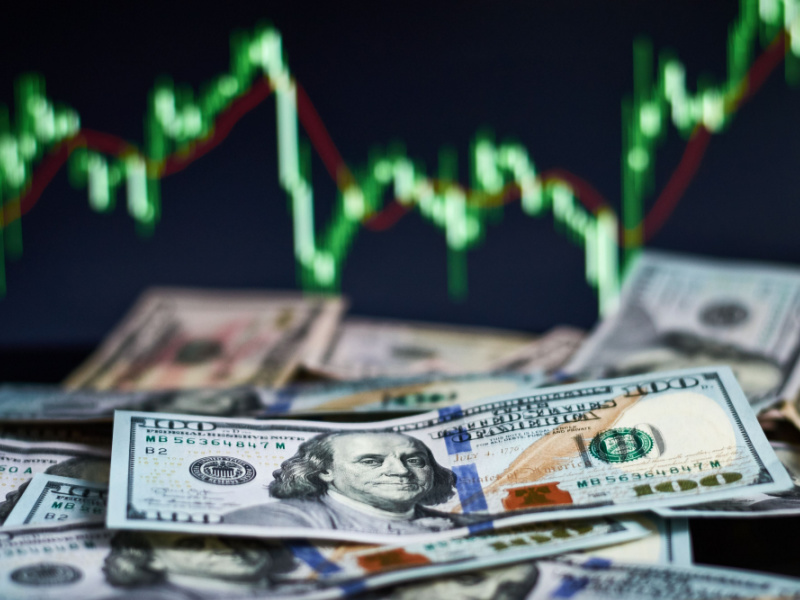
2022 saw the Indian Rupee hitting the newest lows against US Dollar as it reached 80 per Dollar at one point and has inched to Rs 82-83 levels. This brought up many questions in everyone’s minds, one of the most common questions being where will the Indian rupee go from the 80 mark.
Well, the answer to this question can be found in the Dollar index. Let’s learn more about this concept to understand its impact on the Indian rupee’s value.
What is Dollar index?
The US Dollar Index compares and measures the value of the US Dollar vis-à-vis currencies of the top 6 trade partners of the USA. Thus, the index compares the value of the US Dollar against a basket of 6 currencies.
The Dollar index moves up when the US Dollar goes up and vice versa. Simply put, every increase/decrease in the US Dollar Index is closely connected to the appreciation (strengthening) or depreciation (weakening) of the US Dollar as compared to these 6 currencies.
Read More: What are currency ETFs? How do they work?
How does the Dollar index work?
The Dollar index is a weighted average of six currencies, each carrying a different weightage. As every economy comes with a different size, the weightage given to each currency in the index is different.
Listed here are the countries included in the Dollar index along with their weights:
Euro (EUR) – 57.6%
Japanese Yen (JPY) – 13.6%
British Pound (GBP) – 11.9%
Canadian Dollar (CAD) – 9.1%
Swedish Krona (SEK) – 4.2%
Swiss Franc (CHF) – 3.6%
The below-mentioned formula is used to calculate the Dollar index:
USDX = 50.14348112 × EURUSD^-0.576 × USDJPY^0.136 × USDCAD^0.091 × USDCHF^0.036 × USDSEK^0.042 × GBPUSD^-0.119
How do Dollar index movements impact the Indian Rupee?
When the US Dollar Index was started, it was set at a base value of 100. Every movement in the index above or below 100 means appreciation or depreciation of the US Dollar as compared to other currencies included in the index. Since the 6 currencies represent different economies in the world, the movement of the US Dollar compared to these currencies indicates a global trend. Thus, if the Dollar appreciates, meaning the Dollar index rises above 100, other currencies depreciate and if the Dollar depreciates, meaning the Dollar index goes below 100, other currencies appreciate.
Since the start of 2022, the US Dollar Index increased by 9% and as a result, we saw the other currencies depreciating.
Why is the Dollar index rising?
The picture below highlights some of the top reasons why the US Dollar has been appreciating this year:
Source – indianeconomy.net
The recent rise in the Dollar index reflects that investors are in favour of the US Dollar since the index value goes up due to a higher global demand for the US Dollar. As US Dollar demand rises, its value goes up and this pushes the Dollar Index up. Some of the top factors that have triggered this rise are:
- The global economy is experiencing turbulence due to the Covid-19 pandemic and consequent recessionary pressures. There is also an added uncertainty around the Ukraine war that is resulting in high crude prices.
- World over, there is a spike in inflation as compared to the US economy. As global currencies face depreciation pressure, it is further strengthening the US Dollar.
- There have been recurring Fed rate hikes in the US and this has created a larger demand for US assets which has resulted in capital inflows to the US. This is also one of the factors adding to dollar demand.
Why does the Dollar index affect the Indian Rupee?
India is also one of the major trade partners of the US. India has been a major services exporter and hence has a trade surplus against the US. However, trade is not always the only reason why currency values fluctuate.
When the dollar index rises, as we saw in the first half of 2022 when it climbed up to 108, investors begin exiting riskier investments and start investing them into the Dollar due to its strength. Such riskier investments are generally seen in emerging markets such as India. In 2022, we saw FIIs or foreign institutional investors exiting India for the first six months as they pulled out a record Rs. 2.8 lakh crore from the Indian markets. This caused significant stress on the rupee and that’s why we saw the currency depreciating.
Conclusion
Many investors globally are also moving away from safer options like gold to infuse money into the dollar. This has also impacted the prices of the yellow metal and pushed them down to nine-month lows. Thus, the Dollar index is not just impacting other currencies like the Rupee as investors are now concerned about investing in other options like gold, which is often used as a hedge against inflation.
FAQs
Experts are speculating that the Dollar index may go as high as the 2001 level of 120, however, this depends on many factors such as any further Fed rate hikes and the global economic situation.
What are the main determinants of exchange rates?
Some of the top factors that influence and determine exchange rates include inflation, monetary policy, geopolitical stability, import and export value, etc.
RBI acts as India’s forex manager by ensuring a balance between the forex and gold reserves of the country. To ensure the stability of the Rupee, RBI also monitors inflation, changes interest rates, and controls the supply of credit in the country.
The latest exchange rate between US Dollar and Indian Rupee is $1 = Rs. 81.36 as of Nov 2022.



























